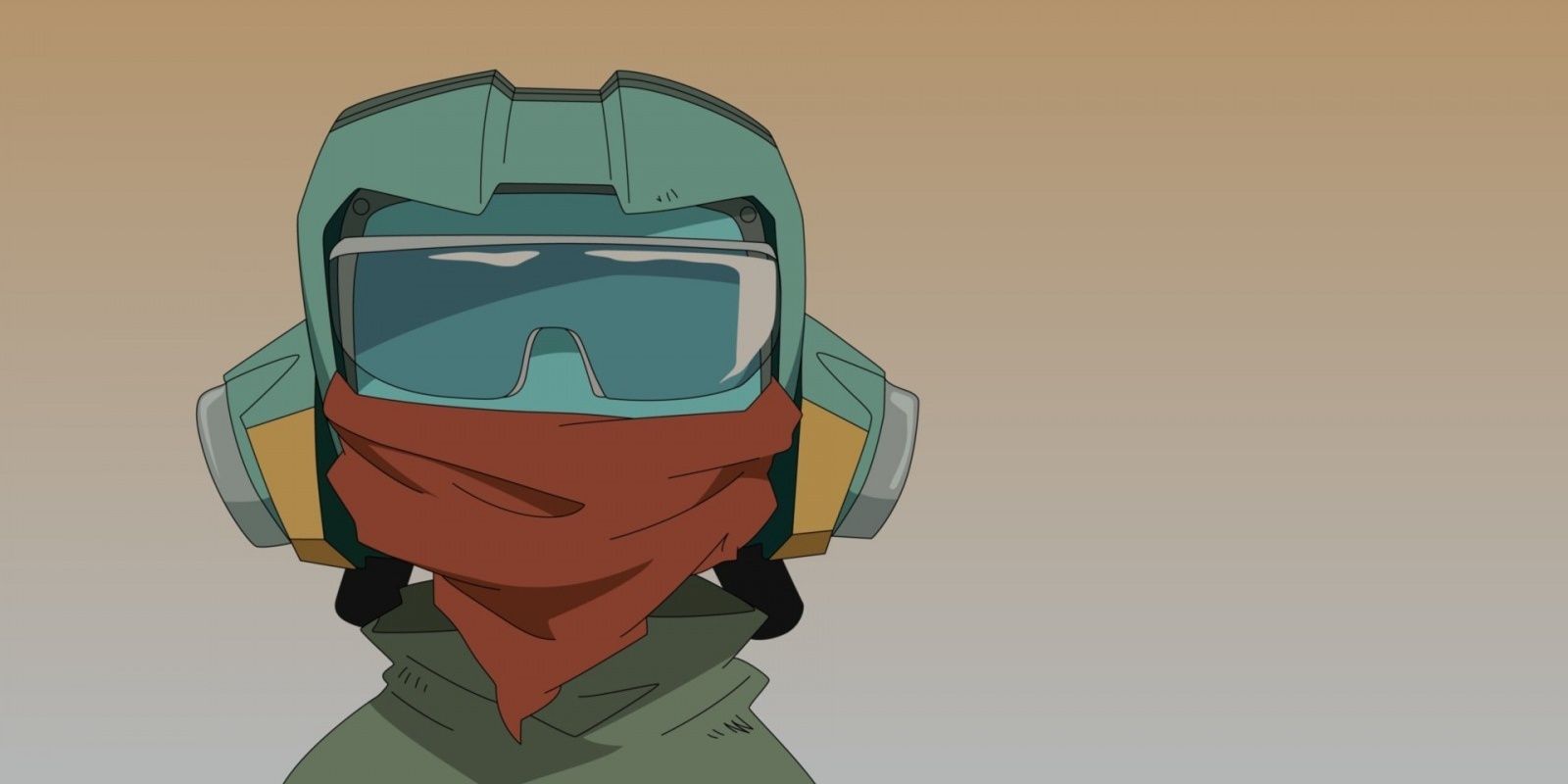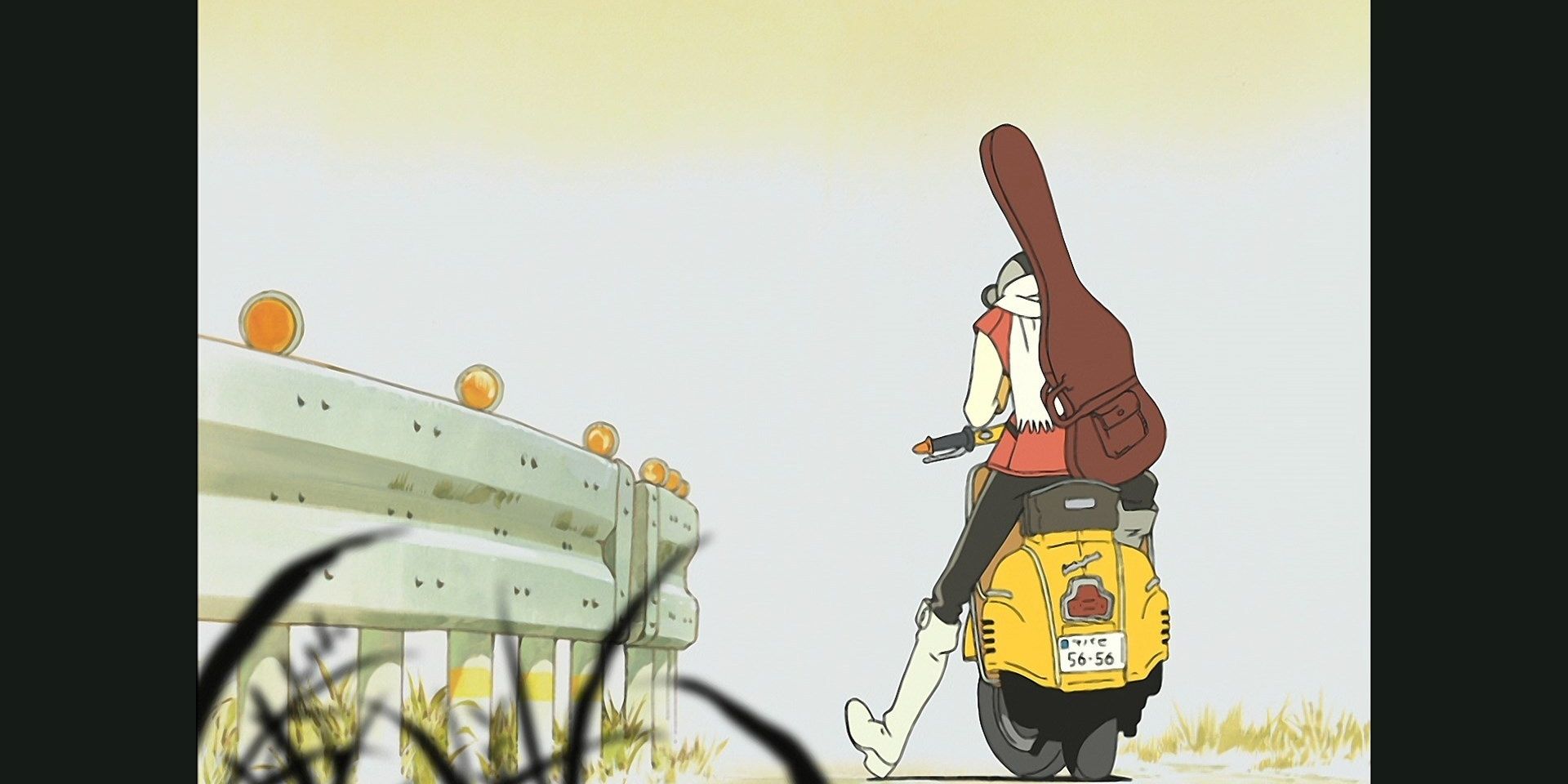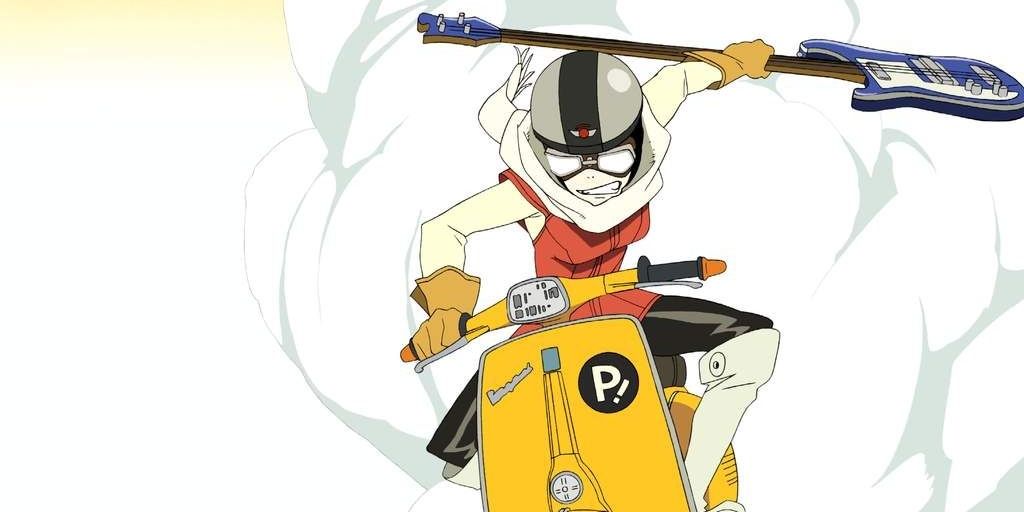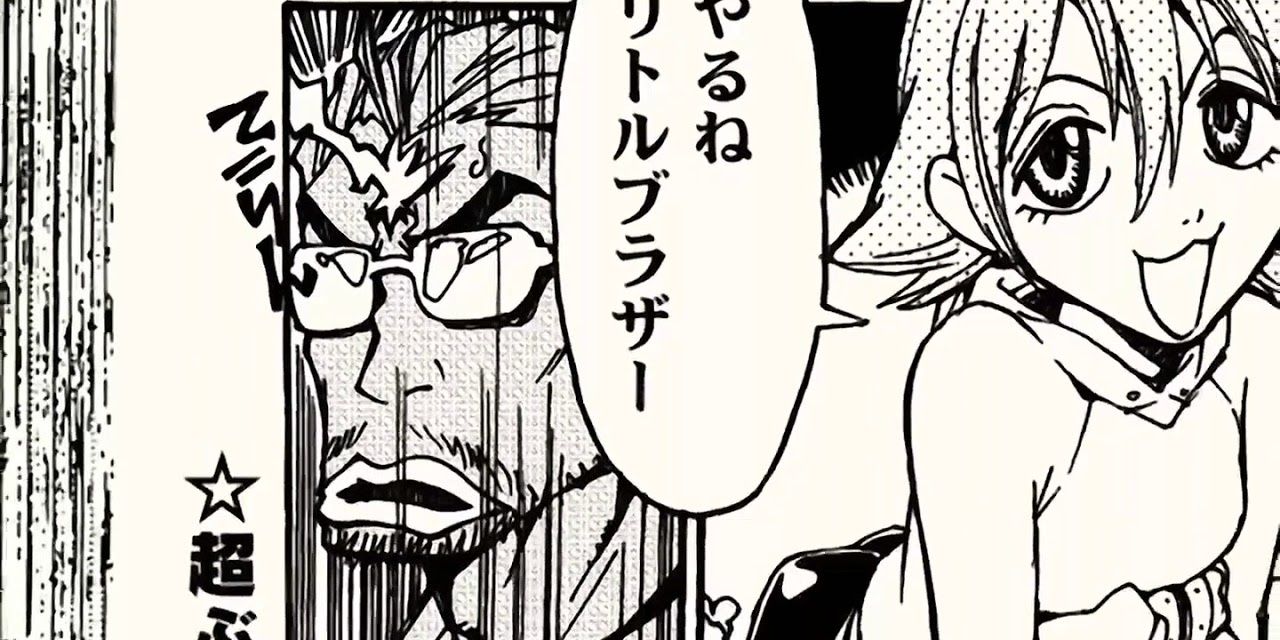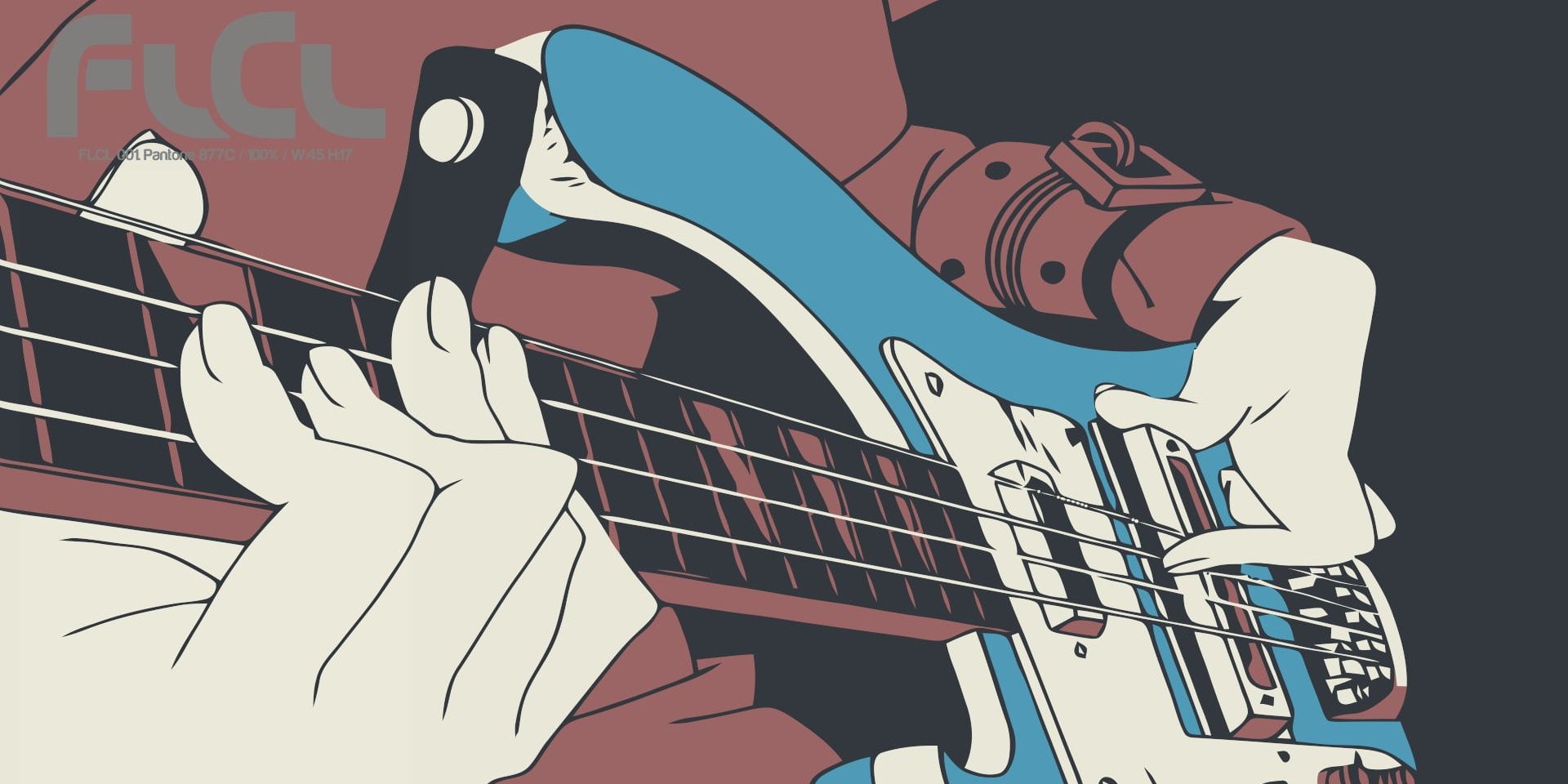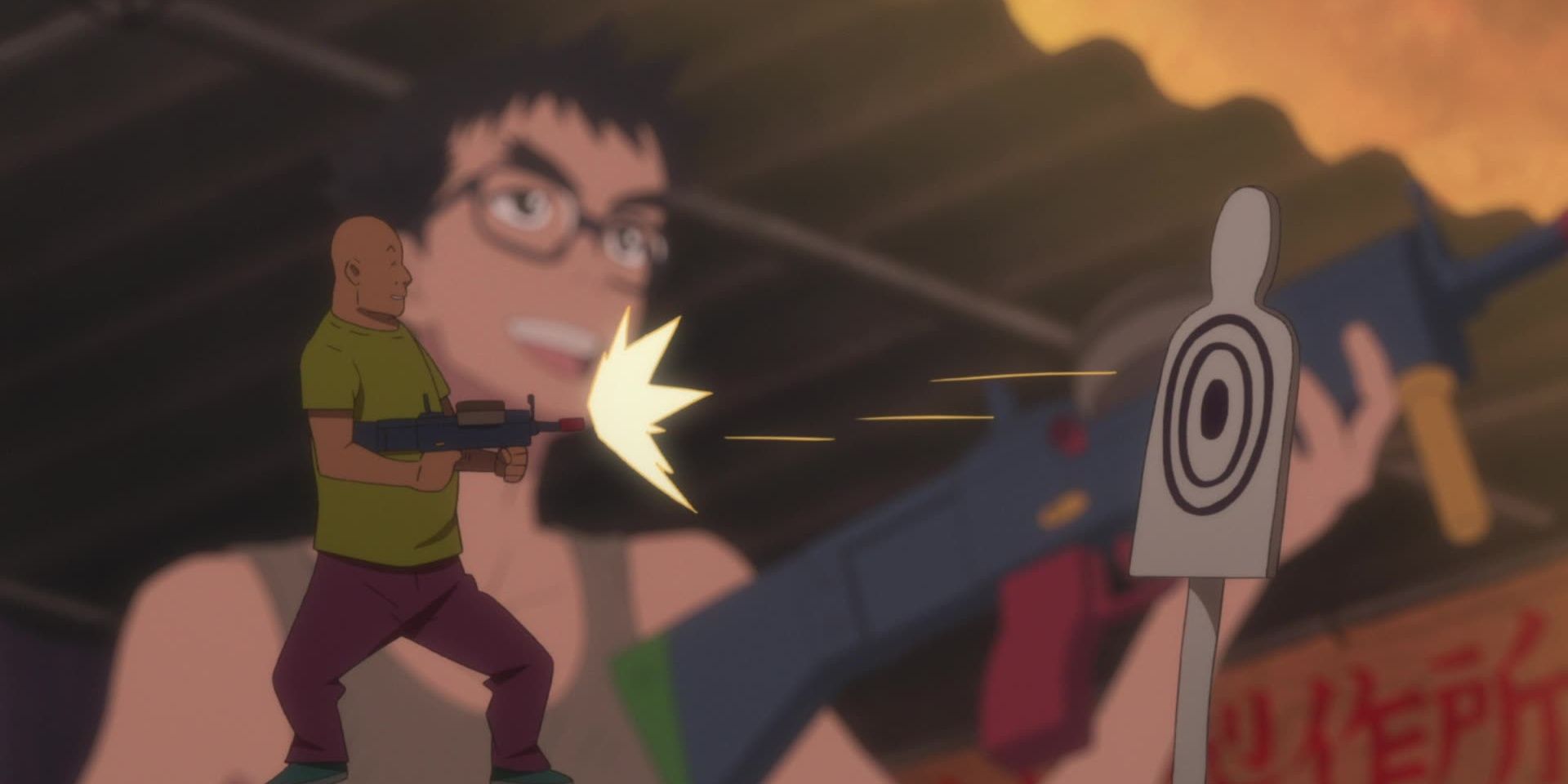FLCL tells the story of twelve-year-old Naota Nandaba, aka Takkun, as it brings the viewer back to that incredibly stressful and confusing time known as adolescence, where bodily changes begin to happen, sex and phallic imagery are all that's in anyone's mind (or on their heads), and no adult in sight really knows what they're talking about.
The series summons all of these feelings via its distinct yet ever curated use of surreal visuals, nostalgic music, and ever sincere dialogue that Gainax just decides to throw at the viewer all at once, creating an experience never seen before in anime, film, or otherwise. Despite being purposefully zany and indulgent, there is some consistency when it comes to design choices, mannerisms, and symbols, though a lot of these can be easy to miss as part of the ensemble. As such, this list will be running down some of the hardest ones to spot.
10 The Ideal Man, The Corrupted Adult
The giant robot Lord Canti, for better or worse, is the manifestation of what Naota perceives to be the ideal adult. When in his blue state, Canti very much acts like the perfect gentleman, helping out the family and assisting people in need, all actions that appear juxtaposed to Naota whenever he acts like the immature kid that he actually is.
In his red state, he becomes much more aggressive, as he's used in fights against Medical Mechanica's other robots, often to the use of Haruko Haruhara. However, besides color, these shifts between Cant's red and blue state are also symbolized on the literal symbol appearing on Canti's face: a fused together, corrupted version of the Japanese kanji for "adult" (大人).
9 56 56
Next on this list of explained symbols, Haruko's infamous yellow Vespa has a couple of them. The numbers on her Mabase license plate read "56-56," which is a Japanese homophone for rumble sounds and thunder or, in this case, the engine revving sounds of the Vespa itself. To take it a step further, this could also be referring to the loud, rambunctious nature of Haruko herself, as she disrupts Naota's otherwise quiet life with her entrance, the sounds of her Vespa acting like the thunder to an incoming storm.
8 P!
Japanese, rock band, The Pillows, played a pivotal role in defining the sound and tone of the series with their contributions to the soundtrack. Key songs like "Hybrid Rainbow," "Crazy Sunshine," or "LITTLE BUSTERS" have become synonymous with some of the series' most pivotal scenes.
As such, finishing this list's analysis of things on Haruko's Vespa, the series makes a slight homage to the band in question by using a logo of theirs, the "P!" symbol, as a decal located at the front of the vehicle, as well as appearing on Haruko's baseball jersey in "Full Swing."
7 Fire Starter
The episode "Fire Starter" featured Mamimi's own descent to pyromania, as she's revealed to be responsible for a series of fires, including the one that led to her meeting Naota's older brother, Tasuku. It's revealed that she does this because of the promise a video game made her that if she burns enough buildings that she'll be able to meet the Lord of Black Flames.
As sad as this is, this is actually true for her. She met Tasuku after her school fire; and after Naota begins to spend more time with Haruko, meets Lord Canti at the same place. The fire at the end of the episode even leads to her reconnecting with Naota, furthering her association. Not exactly a happy ending.
6 Mamimi's Play and Her Parent's Divorce
The episode "Marquis de Carabas" focuses on Naota's classmate, Ninamori, as she tries to convince Naota to play a big part in the school play as well as plays off her parent's nasty, potential divorce. It's later revealed, however, that she manipulated the class' votes for parts so that she could play the lead role and Naota her second, doing so because, as it turns out, her parents were willing to attend the play together.
However, early on in the episode, Mamimi shares the exact same sentiment and summarizes Ninamori's entire intent, when she tells subtly tells Naota that her own parents are divorced:
"I used to be in school plays. It was really dumb and embarrassing. But I was kind of happy, too! Mom and Dad both came to see me together, so it's a good memory!"
5 Naota's Dad and Hamsters
Kamon Nandaba, Naota's father, is someone that the series sells really well as irresponsible and immature but doesn't really define all that well as a father until the final episode "FLClimax," where he states the following during a parent-teacher conference:
"When I was in the sixth grade, I was in charge of the hamster. But I caught a cold, and I was absent. So, when I went back to school, two or three days later, it was dead. Well, everyone made a big deal about it, calling me “Hamster Killer.” But, the kids who said that had never once taken care of a hamster in their lives. Did they even think about me...?"
At one level, this is Kamon commenting on the fact that the teacher, someone with no parenting experience, is trying to tell him how to parent. At another, it's whiny and telling of how negligent of a parent he is. Not only did the hamster die on his watch; but in this episode, Naota is dealing with one of the hardest parts of his life alone and at the mercy of the literal personification of volatile emotions.
4 Haruko's Bass vs. Ninamori
Haruko's bass guitar is often used to incite adolescent changes within people, such as Naota, or to fend off agents of order, like the Bureau of Interstellar Immigration or the robots of Medical Mechanica. However, if there's one person that Haruko's guitar doesn't work directly on if at all, it would be Ninamori.
During their fight at the end of "Marquis de Carabas," Haruko's attacks never seem to work, with Naota's spicy curry, the repeated symbol of maturity, inevitably being the one to overwhelm her. If anything, this is the series saying that Ninamori as susceptible to the pubescent angst plaguing Naota, which is why "FLClimax" really hammered down the fact that Ninamori really was a changed, responsible person.
3 Gun Play
One of the series' more readable metaphors, guns are often used as phallic symbols. This is especially the case in the episode "Brittle Bullet," where Naota's family starts playing with over-the-top toy guns, and the episode ends with a giant robot made of giant guns.
However, with all this silly gunplay in mind, the episode makes it a point that it's not necessarily the size of the gun that matters but kind a person can really handle. Case in point, Ninamori, halfway through the episode, wins a toy water gun, a simple, childlike symbol juxtaposed to the metal mayhem in the background, and thinks to herself, "It's nice."
2 FLCL Progressive: Language Scene
This list's only entry from the sequels, the language scene from FLCL Progressive is an easy one to miss but ever one to appreciate. In the episode "Freebie Honey, "Ko tries to sell a pebble gun and its accessories to some foreign tourists who try out the gun on Ko himself. In the English dub of this episode, the group is Japanese, and Ko begs them to stop in Japanese. In the original Japanese dub, the tourists are American, and Ko begs in English. It's a slight detail that not everyone will get to see but is still a nice touch, nonetheless.
1 Ninamori's Guitar
Last but not least, this list reaches a fine detail at the very end of the episode "FLClimax." Guitars throughout the series are often used as symbols of purity or corruption. Haruko's red bass is used to forcibly change Naota and Canti. Naota's own guitar from "Full Swing" is white, symbolic of his purity, though he would later get a red bass in "Brittle Bullet," with the two fusing together during the final episode.
However, making it on this list is a guitar not seen quite as prominently. At the end of "FLClimax," it's casually revealed that Ninamori has been taking music lessons with the camera showing a guitar case behind her, finalizing her story as someone not only in control but also willing to consistently work on themselves.


